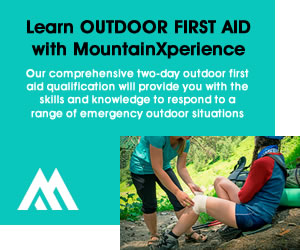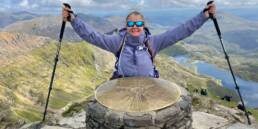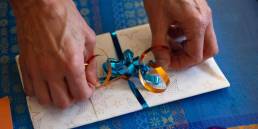If you’re a regular user of Snowdon or find yourself spending a lot of time outdoors generally, it’s time to upskill your first aid abilities. Outdoor first aid is very different to regular first aid in that help is unlikely to be readily available.
First aid saves lives and knowing what to do in an outdoor emergency will make a huge difference when helping someone who is sick or injured. There are many environmental factors to think about when in an outdoor setting so being able to administer first aid effectively where it may prove challenging for the emergency services to reach you in a short period of time is essential.
Outdoor first aid may be useful for activities such as hiking, running, camping, cycling, climbing or any activity that takes place outside in the open air, that is distant from the emergency services.
What is first aid?
First aid is the initial treatment given to someone who is injured or sick, prior to professional medical assistance arriving and taking over from you. As a First Aider, the priorities for the casualty fall into the following categories:
- PRESERVE life
- ALLEVIATE suffering
- PREVENT further illness or injury
- PROMOTE recovery
For example, if a casualty has fallen onto a jagged rock and cuts their arm, you can preserve life by offering treatment immediately and not waiting for professional help to sort it out for you. If you do nothing, your casualty could bleed to death. You can alleviate suffering by making the casualty more comfortable, keeping them warm and offering lots of care and attention. You can prevent further illness or injury by applying a secure sterile dressing over the wound in order to control the blood loss and prevent the risk of infection. Finally, you can promote recovery by treating the casualty for shock and summoning for professional medical assistance as soon as possible.
So how is outdoor first aid different?
In an urban setting such as in the home or at the office, we rely on medical professionals to provide assistance when someone falls sick or becomes injured. Usually, help arrives very quickly, and brings with it the necessary resources to aid the casualty and to keep them alive. Although the protocols and procedures are comparable to that of First Aid at Work, Outdoor First Aid has a more distinct focus, because:
- Illnesses and injuries occur outdoors, often in adverse conditions that affect both the casualty and the rescuer
- Professional medical assistance may be delayed for extended periods of time due to difficult locations, severe weather conditions and a lack of communication and transportation
- Certain injuries and illnesses are far more common in remote locations (sprains and strains, frostbite, insect stings, blisters, hypothermia)
- First aid supplies and equipment may be limited
- Important decisions must be made. For example: deciding whether to move and evacuate your casualty
Where can I learn more about outdoor first aid?
Fortunately, learning outdoor first aid doesn’t take much time or effort on your part (certainly not compared to how it could save a life). Our friends, MountainXperience offer regular courses to teach outdoor first aid based on Snowdon.
Their comprehensive two-day outdoor first aid qualification will provide you with the skills and knowledge to respond to a range of emergency outdoor situations including when and how to move a casualty, major illnesses and injuries, administering CPR and managing someone who is unresponsive.
The course is useful for anyone spending time in the outdoors including outdoor professionals and employees who work in rural or remote environments. It enables successful candidates to undertake the role of the First Aider when emergency medical assistance could be more than 30 minutes away.
Courses are delivered in a friendly, relaxed manner by experienced outdoor professionals. The aim is to keep medical jargon to a minimum and focus on ‘active learning’. MountainXperience believes the best way to learn is by ‘doing’ and not by sitting in a classroom with a notebook listening to someone talk at you. Where weather conditions allow, much of the course is taught in the outdoors … exactly where you’d expect to use your new found skills.
The qualification meets the Outdoor First Aid Band 3 requirements set by the Institute for Outdoor Learning and is particularly suitable for those with outdoor instructor qualifications such as Mountain Leader, Rock Climbing Instructor, Paddlesports Instructor, etc. It’s also essential learning for Scout and Guide Leaders, DofE instructors and assessors, forest school leaders and many more.
Over the two days, you’ll cover a range of outdoor first aid topics including:
- What is outdoor first aid?
- Bones, joints and muscle injuries
- Monitoring
- Major illnesses
- Secondary assessment
- Burns
- Wounds and bleeding
- Bites and stings
- Incident management
- Summon assistance
- Chest and abdominal injuries
- Primary survey
- Extreme heat and cold
- Disorders of respiration
- Poisoning
- First aid equipment
- Head and spinal injuries
- Scene survey
- Anaphylaxis
- Resuscitation
- Eye injuries
- Hypovolaemic shock





